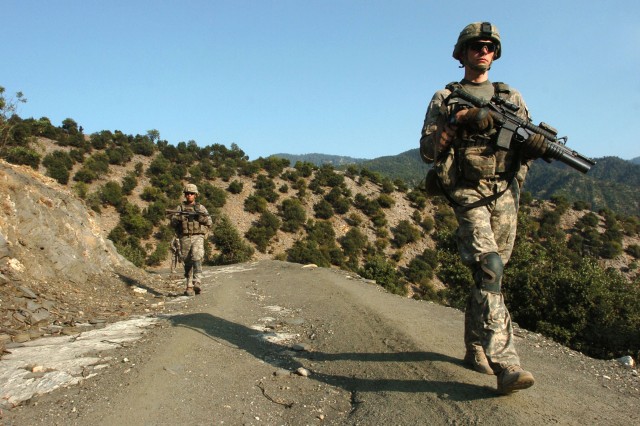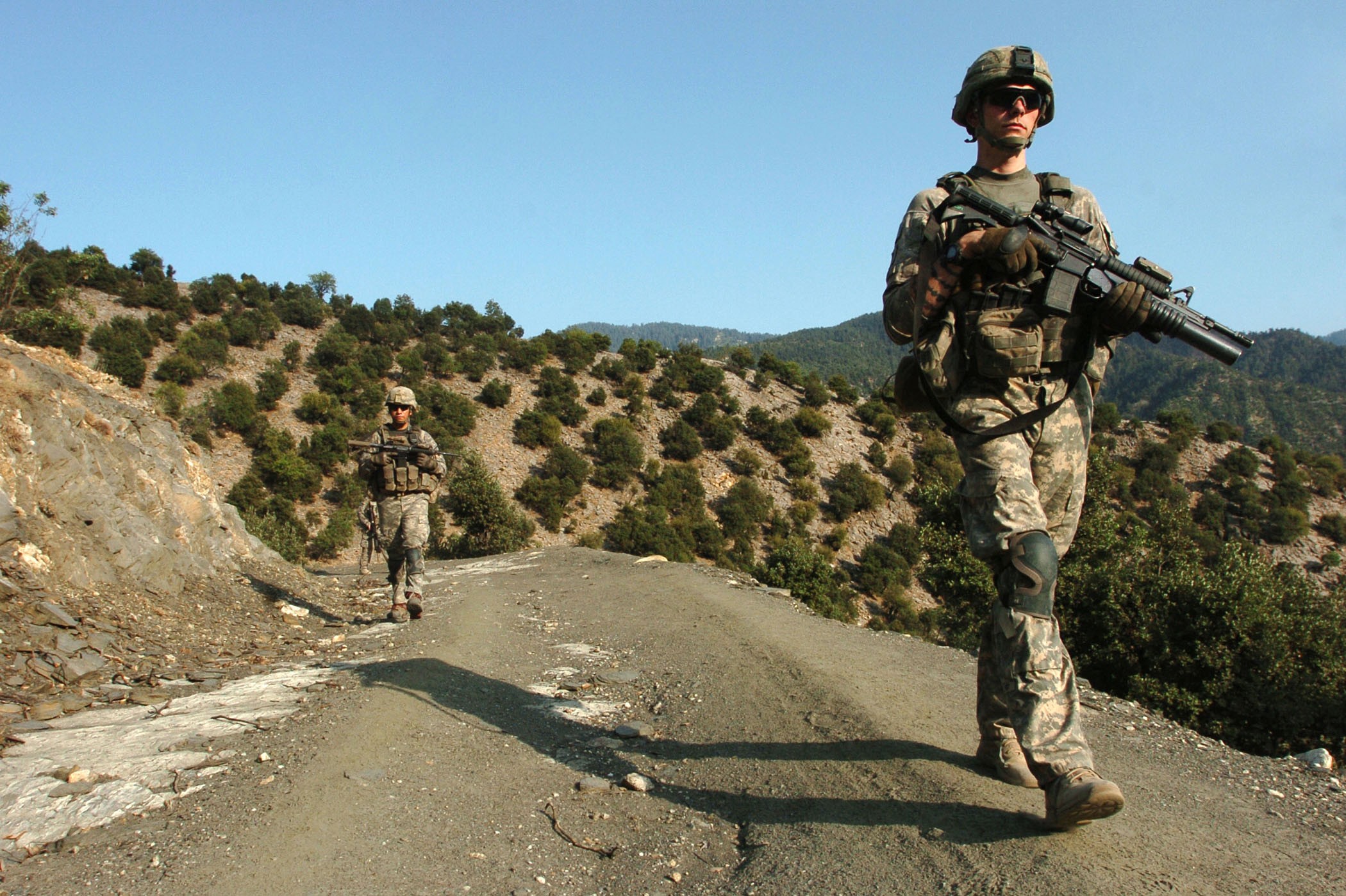GETTYSBURG, Pa. (TRADOC News Service, Aug. 20, 2009) -- Updates to the Army Capstone Concept, expected to be published in December, were briefed at the U.S. Army Training and Doctrine Command's senior leader conference last week.
"We have to be able to defeat the enemy, conduct security operations, and also conduct a broad range of activities while conducting stability operations - and be able to transition continuously across the spectrum of offensive, defensive, stability and civil-support operations," said Brig. Gen. H.R. McMaster, director of the Army Capabilities Integration Center's Concepts Development and Experimentation Directorate.
The new Capstone Concept, McMaster said, examines how the Army operates under conditions of complexity and uncertainty in an era of persistent conflict. The concept's purpose is to put into operational terms Army Chief of Staff Gen. George Casey's vision of balancing the Army to win today's wars while describing how the future Army will fight the wars of tomorrow.
The previous writing of the Army Capstone Concept was in 2005 and was led by Maj. Gen. David Fastabend.
"The biggest change is that we're recognizing some of the limitations in technologies that were designed to improve situational understanding and situational awareness," said McMaster. "We understand now how enemy countermeasures can place what we need to know about the enemy and what we need to know about the situation outside the reach of technology."
In the new edition of the Army Capstone Concept, understanding the situation will be better defined and what the Army learns about the ethnic and cultural aspects of a situation will be factored into whatever threat the Army will face in the future.
The primary purpose of the capstone concept is to lead force development and employment by establishing a common framework to think about future Army operations; place modernization decisions in a broader context of future armed conflict; establish a conceptual foundation for subordinate concepts; guide experimentation in Army operations and capabilities; and guide capability development.
"We looked at how the Army intends to operate and face the challenges in the future operating environment against what we're calling hybrid threats," said McMaster. "By looking at the current operating environment and the hybrid threats we face and could face in the future, this helps the Army make a grounded projection into the near future and understand what challenges our Army will face as part of a Joint, interdepartmental and multinational force, and then develop the capability our Army will need to fight the future battle."
The new Army Capstone Concept isn't going to change the way the Army operates.
"This will help our Army fight effectively as part of the Joint force," said McMaster. "We looked at what the Army brings to the fight. The Army has to bring to the situation the ability to establish control over wide areas and defeat enemy forces. To establish control and defeat the enemy, we need to have capabilities complementary to those in the Joint force. In this concept, we have identified what we need to bring to the fight in combined arms capabilities."
As the 20-member team led by McMaster began planning for the development of the capstone concept, there were several major questions they hoped to answer when the final product is published: one, what is a description of future armed conflict; two, how should the Army operate to conduct Joint land operations that contribute to political outcomes consistent with strategic objectives; and three, what additional or new capabilities should the Army provide to Joint force commanders to meet a broad range of national security threats'
As the concept is being developed, McMaster's team realized that the Army faced a constant problem. How does the Army apply resources made available to them to overcome a combination of hybrid threats and adaptive enemies in complex operating environments'
"The first thing the Army needs to do is understand what the demands on it will be," said McMaster. "The key thing is to have flexibility. No matter how hard we think about it, you're never going to get it quite right. The key is to not be so far off the mark that you can't adjust once the demands of future armed conflict are revealed to you."
There are many aspects that go into the problem and many different solutions:
Aca,!Ac Conducting operations under the condition of transparency;
Aca,!Ac Conducting operations with partners and among diverse populations;
Aca,!Ac Overcoming anti-access in the context of a Joint operations;
Aca,!Ac Conducting and sustaining operations from and across extended distances;
Aca,!Ac Fighting for information (physical reconnaissance and human intelligence);
Aca,!Ac Employing the manpower, mobility, firepower and protection to close with the enemy;
Aca,!Ac Conducting area security operations over large areas (including population security and precision fires to limit collateral damage);
Aca,!Ac Developing partner capabilities (for example, security force assistance);
Aca,!Ac Protecting the network and routinely fighting in degraded mode;
Aca,!Ac Overcoming hybrid threats/complex web defenses in complex urban terrain;
Aca,!Ac Ensuring tactical mobility in complex terrain and overcoming enemy countermobility efforts; and
Aca,!Ac Reshaping logistics and the demand side of sustainment to ensure operations without pause and freedom of movement in non-contiguous areas of operations.
With operations ongoing in Iraq and Afghanistan and facing an uncertain future with a possible unknown enemy, what is happening in the world is a fluid situation, so the Army Capstone Concept needs to be able to be adjustable to what the Army faces in the future, McMaster said.
"The concept recognizes that we are in a very complex environment," said McMaster. "We're engaged and will continue to be engaged in conflicts that will continue to evolve based on interaction with the enemy and other destabilizing factors. We will work to continually reframe and reassess the situation - and that is one of the foundations of the Army Capstone Concept."
The concept isn't directive in nature and is intended to be a guide of how to prepare for the possibility of future conflict.
"We are trying to capture a broad range of contingencies that are derived from national security guidance [and the] national defense strategy," said McMaster. "The concept is based on what we see as current and emerging threats to national security. Those include some we have familiarity with, such as networked terrorist organizations, hostile states and hybrid threats from both state and non-state actors - and grafted on top of the problem are criminal organizations. You also have insurgency and counterinsurgency, and that has a dimension of civil war involved [in it]."




Social Sharing